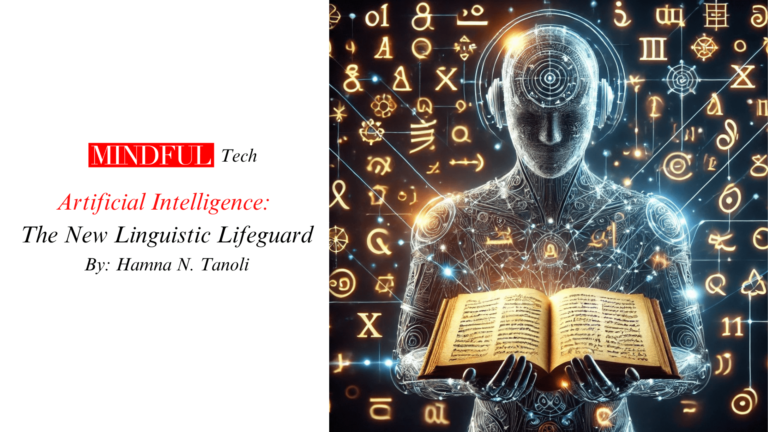Imagine this: you’re scrolling through social media, and instead of the usual memes or cat videos, you stumble upon an obituary for a language. “R.I.P.,” it reads, “another language has died today, and we didn’t even get to say goodbye.”
You keep scrolling, but something nags at you. Wait – languages can die? And who’s keeping count?
The truth is, every two weeks, another language fades into oblivion. Gone. Poof. One moment it’s alive with the sounds of generations of stories, songs, and culture. The next, it’s as if it never existed. If this were happening to animals, we’d be in full conservation mode – throwing money at research, holding vigils, starting hashtags. But with languages? Most people shrug. Not Google, though. Nope, Silicon Valley has decided to step in and save the day, and guess what tool they’re using? Artificial intelligence.
First off, let’s clear something up: languages don’t just die because people get lazy or suddenly decide speaking in emojis is easier (though, who knows, we’re headed that way). Languages die because the last few speakers, often elderly, pass away, and with them goes the knowledge of the language.
Now, enter AI. Yes, that same AI which recommends yet another episode of a show you don’t even like. This time, however, AI has a nobler purpose: documenting and reviving endangered languages.
AI loves data – it thrives on it, like your pet goldfish on flakes. So, one way it helps save languages is by gobbling up as much linguistic data as it can and store it in a digital vault. Platforms like Google’s Endangered Languages Project are doing just that, collecting recordings, transcriptions, and even dictionaries from communities around the world.
The Māori language provides a powerful example of how AI can contribute to the revival of a cultural identity almost lost to history. After years of suppression due to colonization, the Māori language was on the brink of disappearing, taking with it the spiritual and cultural heartbeat of New Zealand’s indigenous people.
The recent renaissance of Māori is no accident; it’s the result of concerted efforts by communities, activists, and, surprisingly, AI-powered technology. Tech companies collaborated with the Māori Language Commission to create a digital assistant that not only understands but speaks Māori, making the language accessible in everyday contexts, like ordering groceries or setting reminders. It subtly reintroduces the language into daily life, making it not just a relic of the past but part of the future.
This shift is deeply symbolic, AI has given Māori a renewed relevance. While AI alone can’t guarantee the future of bilingualism, it’s certainly laying the groundwork for a world where the line between ancient and modern languages blurs, ensuring that the wisdom of the past coexists with the technology of the future.
So, is AI the knight in shining armor we’ve been waiting for? Maybe. But even knights have flaws. There are some pretty glaring challenges in relying on AI to do all the heavy lifting in saving languages. For one, AI needs data – tons of it. AI is great at processing whatever scraps we give it, but sometimes the crumbs are too few to make a decent loaf. And that’s not even mentioning the cultural sensitivities that come with it. Should tech companies really be the ones holding the keys to a community’s linguistic treasure chest? Or does that responsibility belong to the people who speak, live, and breathe the language?
Despite these challenges, though, AI has proven to be a powerful ally in preserving endangered languages. It’s not a perfect solution, but it’s a start.

Hamna N. Tanoli is a freelance writer and can be contacted at hntanoli25@gmail.com.



